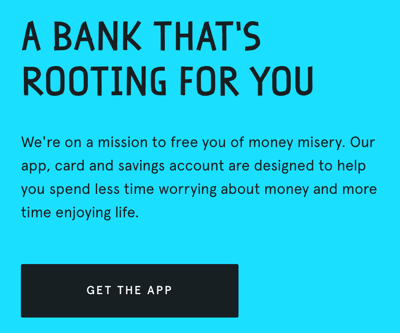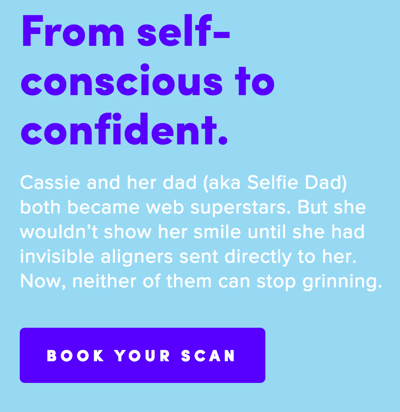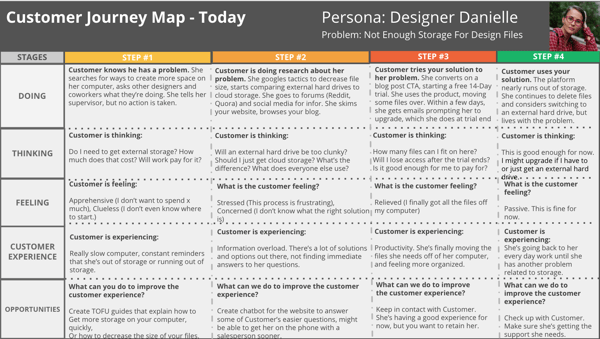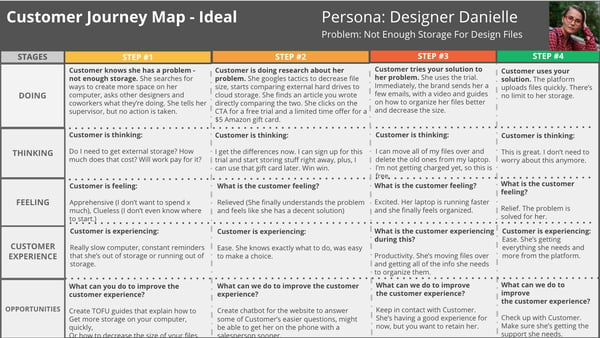In the early 2000s, a friend of mine started a band. She loved singing and theatre, having gone to college for the dramatic arts. She even did some street performing. Her group began playing at small bars, clubs, and house parties around Cambridge, Massachusetts and before long, they had a lot of fans.
Before and after shows, she met fans and asked them questions. Eventually, she began to collect their email addresses during the shows. She sent out a newsletter and launched a website.
After the site launched, she kept encouraging her fans to engage with her online. She shared exclusive material and events, forming one of the most intense fanbases in music.
The friend I'm referring to is Amanda Palmer of The Dresden Dolls. And while we're not really friends (yet), Amanda is a great example of someone who has strong connections with her audience. In the business world, she masters what we would call having a customer-centric culture.
4 Signs that You're Failing to Create a Customer-Centric Culture
A customer-centric culture is an environment that focuses on the wants, needs, and desire of the customer.
And in music, when you start a new band, you need to leverage these things to build up a loyal fanbase. In business, you need to do the same. And it's not easy. There are limited resources and there is urgency and anxiety around attracting customers (or listeners.)
Brands and bands need to gain brand awareness as soon as possible.
Every show and every sale counts.
And typically, when your fans aren't happy, things will start to go south. Thankfully, there are common signs that you're failing to create a customer-centric culture. When you can identify these things, you can pivot and quickly rebuild trust and rapport with your audience.
#1. You're Not Converting Organic Traffic
If you're not converting your organic traffic into leads or customers, there's something wrong with your website content strategy. It's possible that your material is too broad, or not enticing enough. Regardless of the cause, you're not connecting with the visitors coming to your site.
In my experience, this happens when startups try to speak to an audience that's too undefined. When you don't know who your customer is, or you're trying to reach too many types of customers, your message comes off scattered or unfocused. Or maybe it's dull. Either way, it's not working, and it costs you potentially great leads.
I mean, I get it. After you launch a startup, you want to engage and connect with every potential customer. But when you focus on quantity, you risk quality. You will alienate customers that could have been a great fit.
In her New York Times Best-Seller, The Art of Asking, Palmer describes the experience she had with her first record label, Roadrunner that inspired her to become an independent artist.
Her label wanted to focus on increasing album sales, so they created a strategy that cast as wide of a net as possible to gain a broader audience. But Amanda wanted to focus on the fans she already had. She knew the value of her fanbase and wanted to ensure those fans would purchase her new album. They were easier to sell.
As a result, The Dresden Dolls, who she calls “punk cabaret” built a feverishly passionate audience. Her intimate, yet theatrical shows, which often include fire breathers, magicians, and classical musicians aren't for everyone, but they're not supposed to be.
#2. YOUR Sales TEAM ISn't Converting Customers
When you're bringing in qualified leads, but your sales team is struggling to convert them, there's a problem with connection. Your product could be overpriced, or your product may suck. There are a lot of reasons your conversions are low, but overall, you're not connecting with your customer.
If you're in this predicament, evaluate:
- Is it easy for your customer to reach you? When it's easy for a customer to reach you, to find answers to their questions, and to pay for your product to service, customers won't have any friction in their experience.
- Are people excited to become your customer? When you can make your customer feel like they're a part of something bigger, they're much more eager to work with you.
- Is it enticing to work with you? When your lead gets tremendous benefit from investing in your product or service, it's a no-brainer to become a customer.
Here's another Amanda example.
In September 2012, Palmer made Kickstarter history when she got funded for her upcoming album. In a few short weeks, Palmer brought in $1.2 million worth of donations from her fans. It was a shocking amount, even to Palmer, who initially set a goal of $100,000.
However, it didn't happen by accident. Palmer was able to drive donations to her project (and could do it again) because she made the process easy, exciting, and enticing for her fans.
- Easy - The fundraiser was through Kickstarter, a platform that makes it incredibly easy to fund projects. She consistently shared the project across her active social profiles, on her blog, and anywhere else she was engaging with fans.
- Exciting - Palmer frequently asks her fans for feedback and supports their creative endeavors, so they already believe in what she's selling, which is more than albums and concert tickets. They're a part of her circle.
- Enticing - The benefits for donating included album downloads, a book of fan art, surprise subscription style boxes in the mail, hand-painted turntables, original artwork by Palmer, VIP tickets, and even a private dinner with Amanda herself.
#3. You're Not Tracking or Reporting On Data
This is 👏the 👏biggest 👏mistake 👏startups 👏make.
You need to know your data.
From the beginning, you need to be setting meaningful goals and objectives, tracking the performance of your website and landing pages in HubSpot (or whichever CMS you're using), studying Google Analytics, installing heat-mapping or recording software, and conducting social listening. And that's just for your website.
When you're consistently tracking customer data, you can make optimizations that will improve the user's experience. You can learn from their frustrations. Nowadays, ignoring your data is even worse because customers are savvy. They know you have access to analytics. They know you're collecting it. If you're not using it to improve their experience, they're going to question your credibility.
The process you use to report and monitor will vary, depending on your brand. But I can simplify how to select the tools and metrics you need with a few questions:
- What are my specific, measurable, attainable, relevant, and time-based (SMART) goals?
- How will I know that customers are using my website with ease?
- Where are the conversion points on my website, and how can I ensure I'm tracking that data correctly?
- Where are my customers saying (or venting) about their experience with my brand, and how do I find those conversations?
Amanda Palmer probably isn't digging through Google Analytics, but she does listen to her fans. She's known for spending a few hours each day sorting through her blog comments and not only replying to fans one-by-one but starting conversations with them. She gets to know them. She connects.
Imagine if your startup did that, consistently.
You can start listening to your fans by employing a few tried and true habits for sustaining positive website performance, including:
- Focus On Key Pages - Your key pages include your home page, conversion pages, and buyer journey pages. For each page, you should track the bounce rate, conversion rate, and session time. You should also consistently click through calls-to-action and follow the customer's footsteps to make sure things are running smoothly.
- Don't Get Distracted - Avoid assumptions and stay focused on your business goals. Let your data tell the story. If you can set up a system of reporting for marketing and sales initiatives, you can collect information and continuously learn from it.
- Create A Testing Framework - One does not decide to test without a plan. For a test to be successful, you need a hypothesis (based on data and findings), and you need to prove or disprove it with data. You can also use the RICE model for determining if a test is worth conducting (which stands for Reach, Impact, Confidence, Effort.)
You want to take a data-driven approach with your website reporting. If you focus on continuous improvement, you can make impactful changes that will improve performance over time.
#4: You're Too Focused On The Solution
Another common mistake is that startups make their website content all about them. The best way to explain this is by showing, so here are a few examples of (nameless) companies who should probably revise their messaging.
Do you have no idea what any of these businesses do? None of that language is specific enough to get your attention, right?
That's why to connect with your customer, you need to step away from your solution and focus on benefits and outcomes.
Here are some genuinely customer-centric headlines:
There's a significant difference between the first set and the second set of examples.
In the second, there is a connection to the customer. Any website visitor who reads one of those headlines understands the direct outcome of working with that company.
I use a customer journey mapping exercise, which can be tremendously helpful if you can be objective about your current sales process.
You will create two customer journey maps, which include:
The Current Customer Experience - The first map documents the customer's experience now (flaws included).
The Ideal Customer Experience - The second map will capture an ideal experience that doesn't exist yet.
From those two maps, you can find opportunities to delight your customer at every essential engagement and conversion point. You can go through the same experience your customer is facing, look for instances where you're too forward with your product and find the places that you're not focusing enough on who you're selling to and what they want.
MAKING YOUR WAY TO Customer-Centric
Whether you're an entrepreneur or creator, you want to grow your audience and bring in a ton of revenue. But when you take that approach and don't take any time to establish relationships with your customers, any success will be short-lived. Over time, customers will leave you. They'll move on to competitors. Because what customers want more than anything else is a connection.
There isn't any discount, sale, or free trial that can replace that desire for real connection. That's why for our sites, I rely on our SprocketRocket Strategy Kit to keep the focus on the customer from the beginning. Because, like Amanda Palmer, I know the real value of loyal, long-lasting customers is priceless.




.png?width=600&name=Example6%20(1).png)
.png?width=600&name=Example7%20(1).png)









